On July 14 2023, Studio Ghibli released animator and filmmaker Hayao Miyazaki’s first movie in 10 years, The Boy and the Heron (titled Kimitachi wa Dō Ikiru ka, directly translated to ‘How Do You Live?’) in Japan. The release of the film was noted for its intentional absence of any promotion, with Ghibli choosing not to release any trailers, images, synopsis or casting details of the film in advance of its Japanese premiere with the exception of a single poster.
The movie is planned for a special preview on November 22nd in NY and LA, followed by a wider release on December 8th in the United States.
Below, this article explains everything about the movie!
*Please be aware that this article contains spoilers.
Introduction to “The Boy and the Heron” by Hayao Miyazaki
The film opens with the sound of air raid sirens reverberating across the Tokyo sky. In 1944, as World War II approaches its final stages, a boy called Mahito Maki evacuates to the suburbs with his father, the owner of a munitions plant. His mother was killed by US bombing, and his father remarries her younger sister Natsuko. The three begin to live together. However, Mahito cannot accept either Natsuko or the baby growing inside her, and gets off to a bad start at school too.
Then Mahito hears his mother calling out to him for help. A grey heron appears, telling him that she is not dead and she is waiting for him to rescue her. On the day that Mahito finds the copy of “How Do You Live?” that his mother left for him, Natsuko disappears. He goes in search of her, and enters a tower in one corner of the estate. It was built by Natsuko’s great-uncle, a prodigious reader who also had vanished. Together with the heron, Mahito travels to another world, where he meets a host of mysterious characters.
Two Books that Influenced the Movie
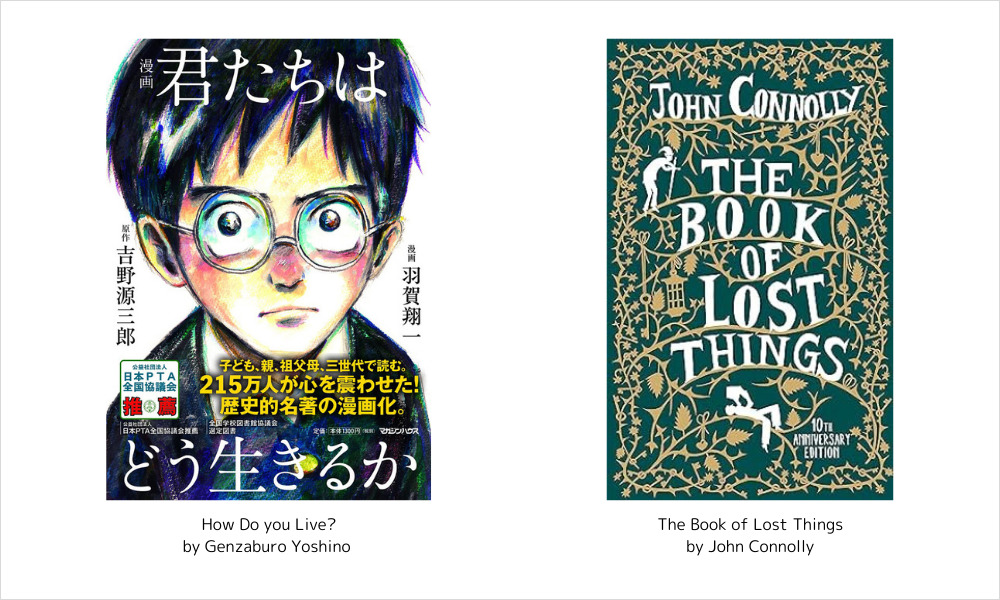
The Japanese movie title Kimitachi wa Dō Ikiru ka (How Do You Live?) references the 1937 novel of the same name by Genzaburō Yoshino, which also appears in the film. The story is about a 15 year old boy, nicknamed Koperu, who has lost his father, and comes to realize various realizations and worries in his school life, and grows mentally through dialogue with his uncle.
Although similar to the movie in that the protagonist “grows up through dialogue with blood relatives”, the characters and storyline are completely different.
Rather, the story is closer to The Book of Lost Things, a children’s book published in the United Kingdom in 2006. Hayao Miyazaki recommended it as one of the books that made him happy in 2015. Producer Toshio Suzuki also mentioned it on the radio, and it was noticed by some that it may have been the basis for this film.
The story takes place in London during World War II. A young boy whose mother dies of illness, his father remarries after only a year or so, his stepbrother is born, and they move into a large house that has been passed down in his stepmother’s family for generations. While being incompatible with his stepmother, a creepy little man called “Twisted Man” begins to appear around the boy. The boy’s mother’s call for help leads him to a deserted Western garden on the estate, and he finds himself in a mysterious world of stories. Mahito is in a very similar situation as the boy, and the “Twisted Man”, who is not sure whether a friend or a foe, is exactly like the trickster, the grey heron who lures Mahito to the mysterious tower.
These books are well worth reading, as they draw all kinds of auxiliary lines in this difficult story of the movie.
Facing Malice
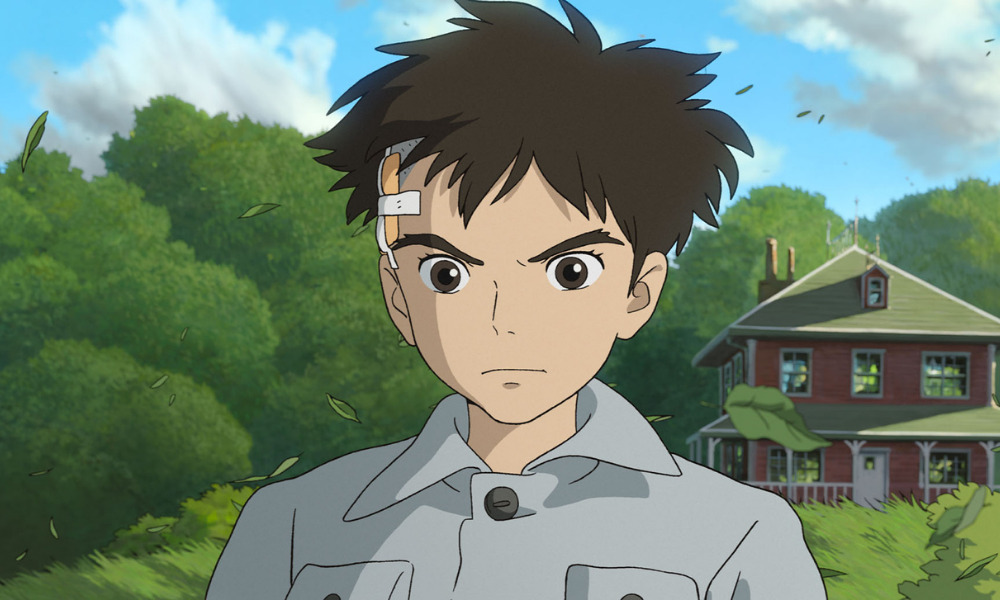
©2023 STUDIO GHIBLI
Mahito violated the taboo of entering the maternity house, which attracted the attention of the great parrot king who ruled the world below, and the captured Himi was delivered to his great-uncle by the king. Mahito’s great-uncle, who was said to have “gone mad from reading too many books and disappeared”, had built a tower to enclose a meteorite that fell from the sky, and had made a contract with the stone to create this world with oceans.
His great-uncle had balanced this world with building blocks. His great-uncle said that only those who were related to him by blood, by contract with the stone could take over his work, and he wanted Mahito to take over his role in order to create a better world. Mahito is faced with a choice: return to the reality where his father awaits him with Kiriko and Natsuko, or stay here to maintain the balance of the world.
Initially, Mahito rejects the building blocks, saying that they are “stones just like graves” and “malicious”. In the last part of the story, Mahito appears before his great-uncle again with Himi, and is once again confronted with the request from his great-uncle.
This time, the great-uncle offers him “stones that are not tainted with malice”. He tells him to pile up the 13 stones he found on his journey, one every three days. When the great-uncle urges him to create a peaceful world without malice, Mahito points to the scar on his own head and claims that this is a sign of his malice. He says that he is not qualified to build a world without malice, and that he will return to his original world.
When asked by his father about his wounds, Mahiito lied and said that he had scraped himself alone, and when asked by Kirico, he falsely claimed that the bandage had been removed. But in this scene, for the first time, he admits that the wound shows his malice. It seemed that Hayao Miyazaki was asking us to confront the “malice” that exists in the world without turning our eyes away from it.
Dialog with the Great Uncle
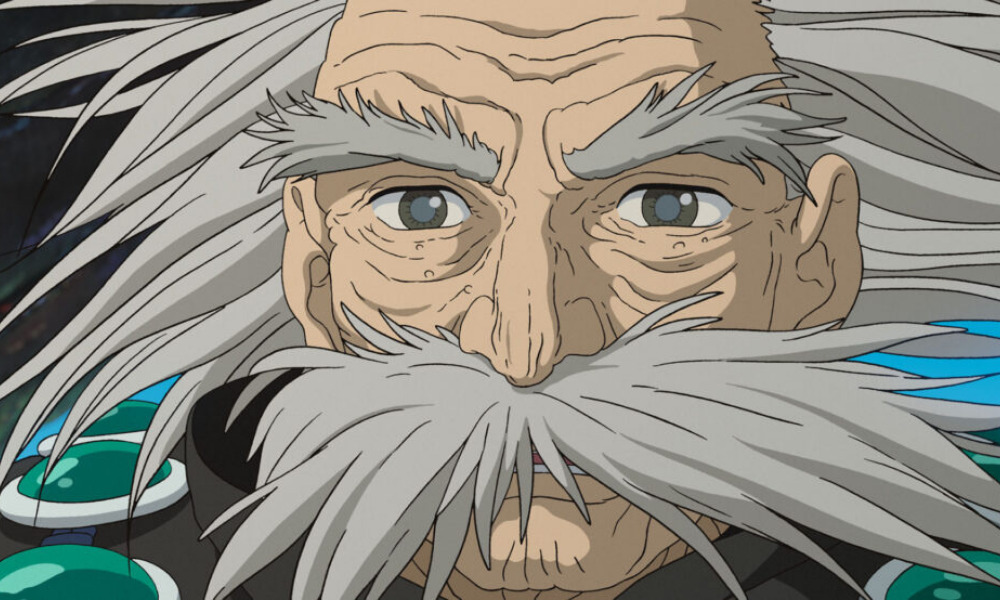
©2023 STUDIO GHIBLI
So, what were the “building blocks” and “the world” that the great uncle was so obsessed with? Perhaps this was a metaphor for “creative activities”. Great-uncle must have left the real world and confined himself to “creation”.
The great-uncle, as an old man trying to pass on his creations to the next generation, seems to be a projection of Hayao Miyazaki himself. The 13 stones that he tried to pass on to Mahito may suggest the 13 films that Hayao directed to date including the short film “On Your Mark” (1995).
Mahito says that the materials used in the great uncle’s creations are gravestones = accumulations of the past, and that he would rather face reality. Rather than inherit the beautiful stones that his great-uncle picked up from his travels around the world, he says he will first accept his malice and make friends in the real world.
In the movie, we repeatedly see the depiction of an imaginary world that was visible as a child but forgotten as an adult. There is the great-uncle, an old man obsessed with creation, and Mahito, a child who can see the world of his imagination but tries to go out into the outside world in order to grow up.
The Ending
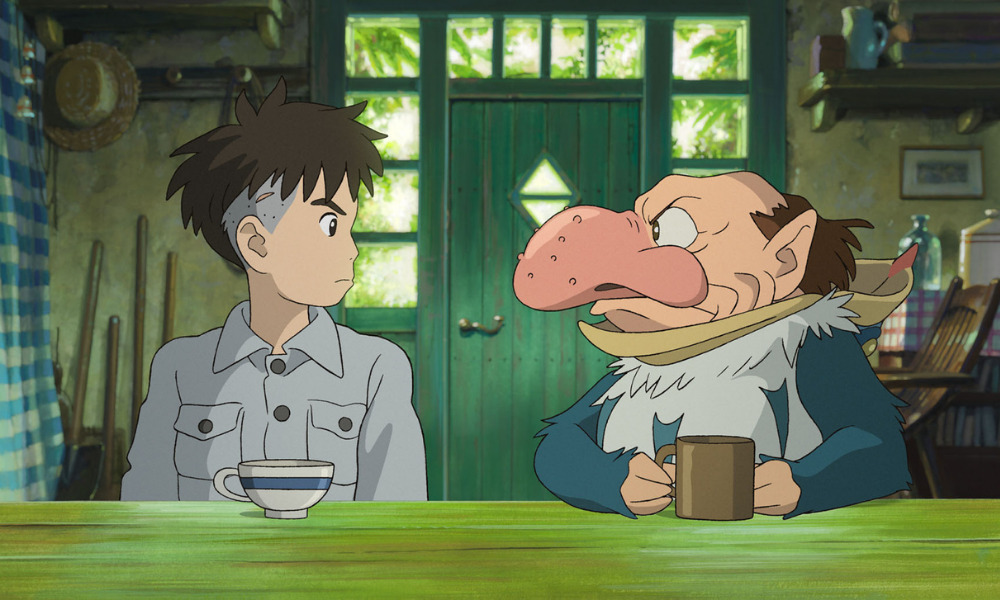
©2023 STUDIO GHIBLI
As his great-uncle’s world is crumbling, Mahito returns to his original world through a door. Himi and Kiriko, however, go out through another door to the outside world. Himi and Kirico had come from the past, and they could not return to 1944 with Mahito. And here, Himi is clearly shown to be a younger version of Mahito’s mother. Mahito’s mother entered the tower when she was a child and remained in this world for a year.
When Mahito returns to the outside world with grey heron and Natsuko, grey heron is surprised that Mahito has memories from the tower. He was able to remember as he kept the Kiriko doll, and the “building blocks” that he had picked up on the hill. Nevertheless, grey heron assures him that he will eventually forget these memories. The grey heron, with whom he had fights and adventures, became his first friend.
Two years after Japan’s defeat in the war, Mahito’s family returns to Tokyo. He would have to live in a new era, postwar Japan. Even so, he still carries in his bag the novel that influenced him, “How Do You Live?”. At the same time, Mahito puts his hand in his pocket, suggesting that he still has the building block stones – creation, and he still remembers his adventure.
Creation gives us hints for living in reality – we can read such a message from this last part. Along with this message, the fact that Hayao Miyazaki continues to create and deliver this message in the form of fantasy itself seems to be a statement of his determination to believe in the power of creation.
How the Movie is a Semi-Autobiography of Hayao Miyazaki
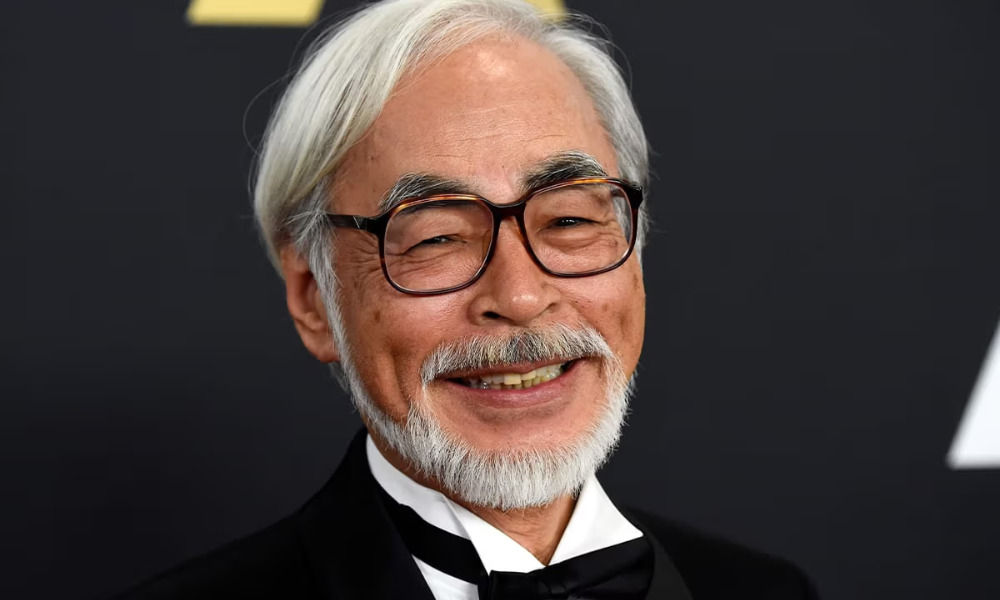
In the official introduction of the movie, it is stated that the movie is “A semi-autobiographical fantasy
about life, death, and creation, in tribute to friendship, from the mind of Hayao Miyazaki”. Mahito and his great-uncle can be interpreted as a projection of Hayao Miyazaki himself. Mahito and Hayao Miyazaki’s circumstances are similar in many ways, such as the fact that his father runs an aircraft factory. The loss of his mother and the mother complex that Masato has may reflect the fact that his mother was bedridden due to illness from his childhood.
The film is also littered with scenes that seem to pay homage to Hayao Miyazaki’s previous works. The first scene in which Mahito sneaks into the tower through a twig recalls the scene in “Totoro” (1988) in which Mahito enters the forest. In the other world created by his great-uncle, we also see a straw that reminds us of Kodama from “Princess Mononoke” (1997) and a red-eyed insect that looks like a smaller version of the king bug from “Nausicaa of the Valley of the Wind” (1984). A large group of parakeets holding up swords reminded us of “Lupin III: Cagliostro’s Castle” (1979).
What may Miyazaki’s message be while projecting himself onto the characters? There are many possible interpretations of the dialogue between the two (Mahito and great-uncle) and the choices made by Mahito. What seems important here is the aforementioned “malice”.
The great-uncle is the creator of this other world and wants his blood relatives to take over his work. He tells Mahito to use the thirteen untainted stones to create an ideal world that is different from the real world and free of malice. Showing the wounds he has inflicted himself, Mahato says, “This is a sign of my malice,” and refuses to remain in his uncle’s world, returning to reality.
If the 13 stones and the other world are animations or creations by Hayao Miyazaki, does this mean that he is telling the audience to return to the harsh reality instead of indulging in fiction without malice? No, more likely asking us to face the malice of the world and ourselves. With that, he is asking “How Do you Live?”.
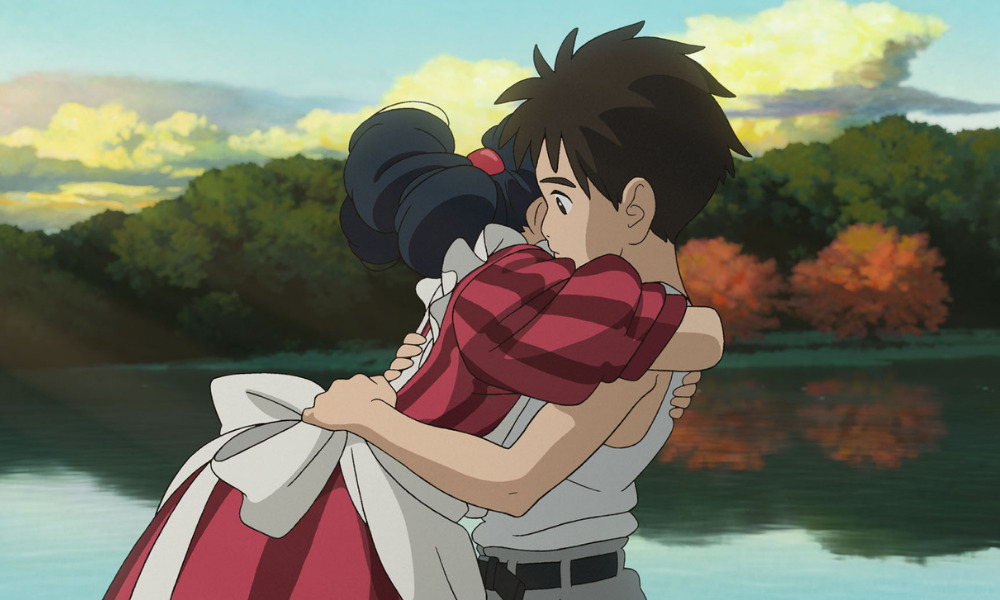


Comments